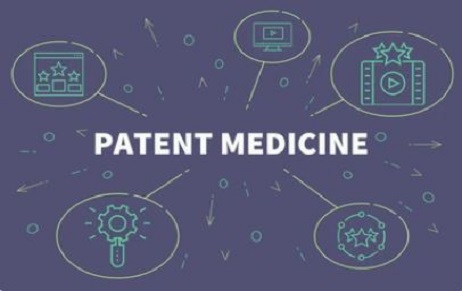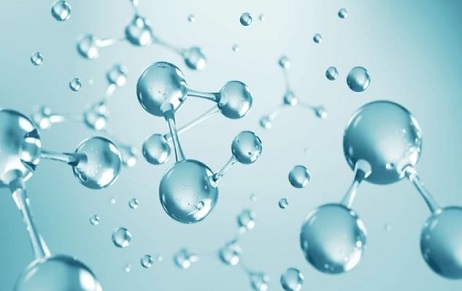Introduction: The development of drugs and other medical products is very important in this dynamic…
Inventors – All Technologies Are not Worth Billions
Working in the IP/Technology Commercialization and Out-Licensing domain makes you assess and evaluate the commercial viability of numerous IP backed inventions across technology domains. Apart from learning about and assessing new technologies, we also tend to learn quite a lot about Inventors’ mindset, specifically about their perspective of their own inventions. This article relates to our experiences in dealing with some of such Inventors and/or Applicants and making a humble submission to them to analyze their own work, not only from a technology point of view but more important from commercial viability and marketability perspective before initiating their research and investing in protecting IP relating thereto. It would be appreciated that the below comments are not being generalized in any manner and that these are only the Author’s views based on his own interactions with Clients.
We understand from our Associates in Israel and some European Countries including Denmark, that there are hardly any patents filed in these countries without proper due-diligence on the future return on investment on the patent and without some kind tie-up already having being done for commercialization or Out-Licensing of the technology. In India, a land where there exists a mandatory requirement for submission of details on working of the invention by the Patentee, where there are numerous agencies supporting technology transfer and commercialization, there exists no such practice, and in fact far from out, to my knowledge, there won’t be even .01% of patents being granted to Indian Applicants, that would ever see the light of the day.
Although, a partial reason for such a low rate of successful commercialization and Out-Licensing could be the mentality of Indian Corporates not to invest in new technologies, not to consider innovation as an integral part of a company, not appreciating Intellectual Properties and enforceable rights given thereby, to have a practice of designing around technologies to avoid infringement, to have an impression of the Courts being slow in granting damages, among many other reasons. In addition, sections such as Sec. 111 (1) of the Indian Patent Act, which state that “In a suit for infringement of a patent, damages or account of profits shall not be granted against a defendant who proves that at the date of infringement he was not aware and had no reasonable grounds for believing that the patent existed.”, really boost up the confidence of Legal Entities not to In-license or buys strong IP’s as reports such as freedom to operate can come to rescue. Having personally seen literal infringers get away from any civil damages under the protection of this clause and the plaintiff’s merely getting injunction granted to them, reinforces this thought of how successful Licensing Efforts can be in India. Anyhow, this article does not even pertain to Licensees or hurdles present in the systems per se, but rather relates to Licensors and their approach towards commercialization.
Hundreds of patent applications across technology domains are filed every month, with a number of them being from Individual Inventors and Research Institutes. Having said so, as individual inventors and R&D entities, most of the time have limited resources for commercialization of their technologies, including but not limited to manufacturing and marketing capabilities, they look out to Out-License or sell the patent right either before or after the grant of the patent. Further, as even Licensing needs dedicated efforts, strong potential licensee analysis, marketing strengths, and convincing capabilities, a number of times Licensing firms are chosen to represent such patented technologies and approach appropriate licensees and understand their interest levels in the technology before proceeding for discussions on terms and conditions for licenses and valuing the technology for the same. As most of the time, such Licensing efforts are taken on a success basis, it becomes crucial for the licensing firms to assess and evaluate commercial strength of the patent and the technology protected there through before committing to proceed with the Out-Licensing process.
The challenge, however, is to convince the patentees as to why this commercial evaluation is an important step in the Out-Licensing process and why it lays down the basic framework for all future efforts through an understanding of the market, the in-licensing behavior of the market, the major players involved, which of these players are approachable based on their background, the costing involved in substitute technologies, the strength of patent, among many other parameters. Unfortunately, as we have experienced, its most of the time a one-way thinking strategy, wherein the Patentees, believe their technology to be a superior one and that technology is all that counts. As if a sense of how the market and existing products behave would not matter. As if a sense of whether the patent, as granted, is strong enough to be enforceable does not matter. As if all potential licensees are eagerly waiting to consider such technologies for the possible in-licensing opportunity. As if the geography in which the patent is granted and intended to be commercialized does not play a role. Most importantly, as if the need for technology in the concerned domain can not be refuted and that the market is eagerly waiting for the technology.
I strongly believe that it is high time that technology commercialization, as a field of IP, is looked upon from a mature perspective, in which novelty and patentability of technology is only one parameter to be considered while assessing the chances of successful commercialization. A host of other attributes play an even more important role during the commercial evaluation, some of which have been very briefly discussed below with respect to certain examples. These examples are mere illustrations and no other interpretations should be drawn from the analysis:
The first technology relates to a method and system for administering the life cycle of Health insurance policyholders, in particular a web-based solution for managing the complete life cycle of Health insurance policyholders. More specifically, the disclosure relates to a web-based system that is capable of managing the entire life cycle of a health insurance policyholder, right from the time he/she subscribes to a policy till the final settlement of insurance claims. The system and method described in the said patent application particularly disclose various interfaces and modules to connect the policyholder to the different stakeholders in his treatment, especially, the Doctors, the Drug Store Attendant, the Lab Assistant, the Nurses, and the Surveyor at the Insurance Company, etc.
The second technology relates to a topical formulation for the treatment of Warts comprising of two carrier systems, with one being a soluble sulfide and the other being a mixture of two drugs in an oil in water emulsion.
Market Perspective: Under the assumption that the Patent has been granted, it is extremely important to understand the market of the concerned domain and whether the same is receptive to new technologies, especially royalty expecting products/technologies. For instance, in the warts application, the existing treatments available for warts include Chemical Destruction, Cryosurgery, Surgical removal method, and prescription medications using agents including Pondophyllin, Cantharidin, Bleomycin, Dinitrochlorobenzene, and Fluorouracil. The proposed formulation, on the other hand, is a topical formulation, based on sulfides alkali metals, which inherently have stability and toxicity issues. Further, sulfides based products, are typically not OTC products and hence have to be prescribed by Doctors, which is the non-preferred route of curing warts by the patients. The market scenario also tells us that companies such as GSK, Merck, Dr. Reddy’s, and Cipla are the major players in the domain, and being a skin disorder product, which is already heavily populated, most of the focus of these companies lies in other medical indications including cervical cancer, etc. Further, with a flood of salicylic acid-based and non salicylic acid-based products in the market, there seems to be little scope for companies to invest in such products. This is more in cases where there is limited clinical data available to the Potential In-Licensees.
Existing Technology Perspective: As was discussed above, with respect to the warts technology, a snapshot of products being right now marketed was analyzed and over 45 products including Duofilm, Secure-17, Shaloxy-FW, Salicylix-SF, and Dr. Scholl’s were found out in the same domain. Being a heavily populated domain, the introduction of a new product, which combines an active ingredient with a pain reliever, which also is quite known, would have a hard time creating excitement.
Patent Strength/Enforceability Perspective: Being granted a patent is completely different from being granted a strong and enforceable patent. A number of times, we encounter patents which good and bypass the market and product level analyze, but are drafted and protected so narrowly that instead of in-licensing, thereof more chances of the potential licensee designing around the technology. Taking, for instance, the first independent claim of the web-based health insurance software, which claims a
“A web-based method for managing the complete life cycle of health insurance policy
holder, said method comprising acts of:
a. registering subscriber to policy…;
b. prescribing clinical tests for the insured person …;
c. performing the prescribed tests and updating the test results …;
d. commencing the treatment by admitting the patient based on the test results …;
e. generating discharge summary upon completion of the treatment …;
f. forwarding claim documents along with discharge summary to the surveyor…”
Even if we assume that the above subject matter is patentable under S. 3(k) of the Indian Patent Act and also overcomes the novelty and obviousness issues, with the above exemplary claim being so narrowly drafted, enforceability would always be questionable and significantly hamper efforts of Out-Licensing the patent rights.
Potential Licensees Perspective: There are often cases in which technology has a strong market application and that there does exist a need for such a technology to improve the manufacturing process. However, even under such circumstances, the out-licensing efforts might not go through because of the target potential licensees that might be involved. For instance, a wire mesh machine that allows a continuous strip being used for making a welded metal lattice is a product that would do very well in EP and US geographies but Indian companies, most of them being unorganized in this domain, would be reluctant to in-license or buy patent rights of such a machine due to parameters such as the cost involved, ease of replication, among others.
Supporting Data/Prototype/Clinical Data Perspective: Another important parameter used for evaluating products/technologies, especially in the pharmaceutical domain, is the level to which the Clinical tests have been done. With most in-licensees, particularly in India, looking to evaluate in-licensing proposals based on prototypes being developed and the clinical data available, it becomes integral to provide as much supporting data as is possible along with the IP details being given in the commercialization proposal.
It would be appreciated that above-mentioned parameters are only an exemplary set, and many other attributes such as patent validity, the extent of estimated effort and time involved in the process of commercialization, expectations of upfront and royalty payments, research being carried out with other competing technology companies, other available in-licensing opportunities, among many others play an equally important role.
I, therefore, believe that the Patentees should appreciate that there is more to a successful technology transfer than merely having a patent in hand and a superior technology in mind. Many other considerations play a role in determining whether the patented product would be acceptable in the market and these are the considerations that need to be analyzed before even initializing the R&D process so that there is little resentment in case after the complete R&D and patent process, one realizes that the applicability and commercial viability of the concerned subject matter is limited.
About the Author: Mr. Tarun Khurana, Partner and Patent Attorney in the Institute of Intellectual Property Research & Development (IIPRD) and can be reached: [email protected].



